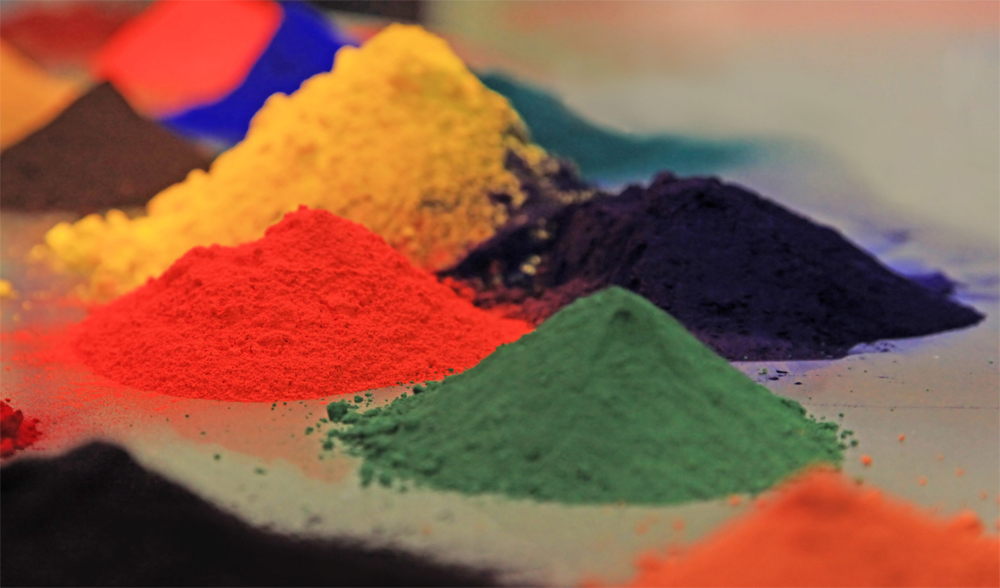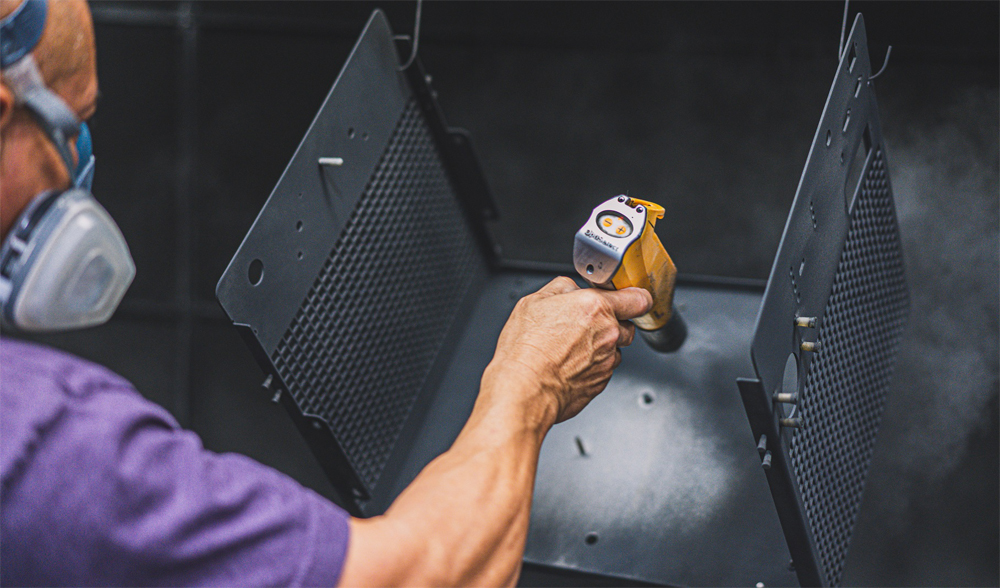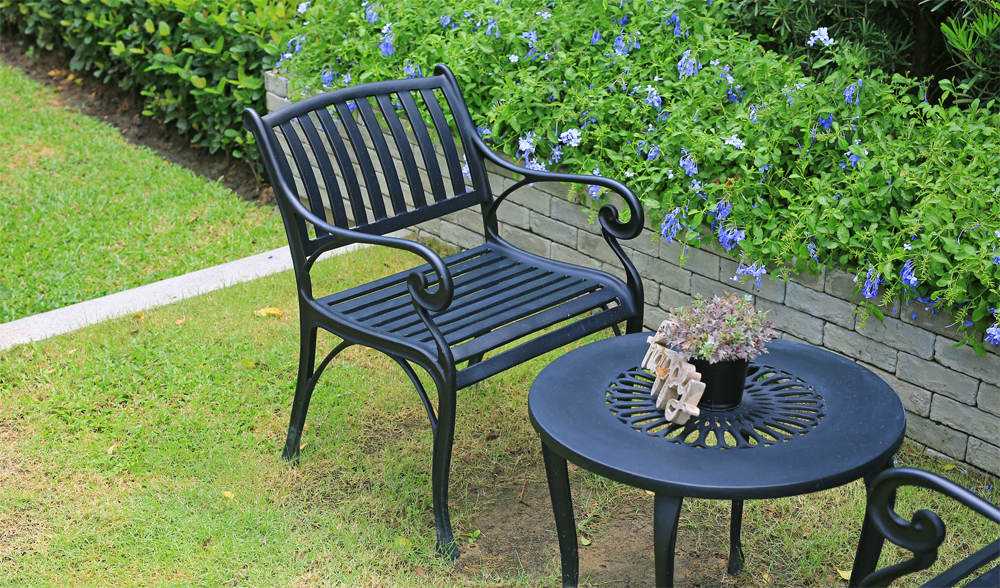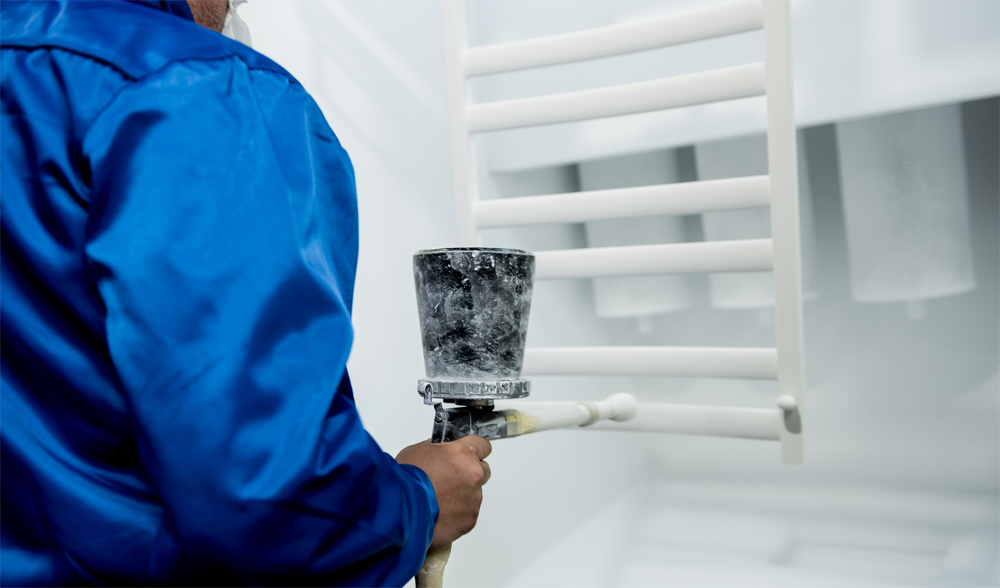Powder coating provides the treated items with reliable durability and longevity. When used for the protection of outdoor furniture, it allows them to be used for years without damage caused by weathering conditions, but also helps create beauty.
Despite being an effective method for protecting and preserving products, powder coating has not yet completely replaced paint as the go-to finishing option. This is mainly due to the complexity and expense of the powder coating process, which requires a significant amount of work and investment to master.
If you’re considering attempting DIY powder coating at home, the challenges and risks become even greater. Without the proper expertise, equipment, and supplies, carrying out this process safely and correctly can be a daunting task.
To help you make an informed decision, this article will provide expert analysis on the risk versus reward of DIY powder coating.

1. High-priced Materials and Equipment
For enthusiasts, when it comes to DIY powder coating, it is often regarded as a way to save money. However, the equipment and supplies needed for a powder coating project can be more expensive than expected.
One of the most challenging parts is the curing oven. It’s essential to note that using a kitchen oven or microwave to cure parts is not safe since toxic gases emitted during the process can contaminate food even after a thorough cleaning.
While purchasing a commercial oven is expensive, many opt for a special curing oven or to build one themselves. However, finding one that is large enough for household parts such as furniture or landscaping features can be difficult. While some people use infrared heat lamps or hot air guns, these methods may not provide the best results since both the paint and substrate need to be heated for proper curing.
Another essential piece of equipment is the powder coat gun. This tool, similar to a spray paint gun, charges paint particles electrostatically so they can attach to the surface of the object being coated.
It is worth noting that cheaper options for powder coating equipment may result in issues with powder distribution depending on your setup. In addition to a powder coat gun and curing oven, the third crucial component you will need is a source of compressed air, typically around 5-10 Bar.
In addition to these major pieces of equipment, there are several other supplies and tools you will need, including media blasting equipment, cleaning solutions, and various additives. Unless you are already an enthusiast with the necessary equipment, powder coating at home will require a significant initial investment.
While DIY powder coating may be appealing to some as a way to save money, it is important to consider the overall cost and effort required to set up a functional system. Professional powder coating companies are often more affordable and can save you the time and resources required to set up your own system. Ultimately, DIY powder coating may be best reserved for those who simply enjoy it as a hobby and are willing to put in the effort to study the science behind it.

2. Personal Safety Concern
DIY powder coating at home also poses greater than average health hazards due to the involvement of high-voltage electricity, fine powder, heat, and chemicals in the process. In the absence of proper safety training, it can pose a risk not just to you but also to others around you.
The following are some of the safety issues with DIY powder coating.
- Powder coating materials are considered finely ground particulates, and therefore, are regulated under Particles Not Otherwise Classified (PNOC). The accepted exposure limit to avoid any adverse effects is set at just 10mg/m3. Any exposure beyond this threshold limit requires proper respiratory and skin protection, which includes masks and clothing.
- Maintaining the proper powder/air ratio is crucial in order to prevent finely ground powders from becoming a fire and explosion hazard. Adequate ventilation and removal of potential ignition sources are essential safety measures to mitigate the risk.
- Using a high voltage ranging from 15kV to 25kV in the powder gun may result in arcing if the tip comes too close to the object being coated. This poses an increased risk of fire.
- To ensure safe handling of the powder coating gun, it is crucial to maintain proper grounding not only for the gun itself but also for all parts, racks, and your own body.
- When dealing with hot oven temperatures, it is important to consider the risk they pose to both yourself and others in the surrounding area.
- Without adequate protection or ventilation, the toxic fumes that are released during pretreatment and curing can be hazardous.
The risks associated with DIY powder coating at home can make the process more challenging and time-consuming. Moreover, if one wishes to carry out the process regularly, these risks escalate significantly and may result in health and safety violations.

3. Disposal of Waste Materials
In general, powder coating materials are considered safe, non-toxic, and can typically be disposed of using regular garbage disposal methods. However, it’s important to note that certain chemicals used in pre-treatment processes are subject to specific disposal regulations. It’s generally not appropriate to flush these chemicals down the drain, particularly if they may end up in a river, pond, or public water treatment facility.
Therefore, before your DIY powder coating practice, it is important to stay informed about the local regulations regarding air quality, water, and environmental safety in your community. This knowledge can help ensure that you dispose of materials in a safe and responsible manner.
4. Non-ideal Pre-Treatment
In DIY powder coating, the pre-treatment phase holds utmost importance. Although many individuals may settle for sanding or grinding, it is typically inadequate in achieving a superior surface for optimal adhesion.
Car parts and other metal surfaces are frequently subject to subpar pre-treatment, particularly when affected by rust, corrosion, surface pitting, or oil. These conditions necessitate more specialized pre-treatment methods to achieve satisfactory results.
Specifically, oil on the surface may need to undergo several baking sessions to allow for the release of gas and trapped oil particles prior to the application of powder coating.
To enhance paint adherence, it is strongly recommended to use media blasting on many of these parts. However, each material necessitates distinct preparation methods. Adequate knowledge of powder coating is necessary for unique substrates such as stainless steel, copper, mixed metals, glass, acrylic, plastics, and others.
Inevitably, inadequate pre-treatment often results in an inferior finish, frequently characterized by bubbles, bumps, or peeling. Additionally, a thorough comprehension of the curing process, including recommended practices, temperature, and time spent in the oven, is imperative.

5. About Skills and Knowledge
As with any type of finishing, DIY powder coating demands specialized training, expertise, and experience to execute to a high degree of proficiency. Achieving a satisfactory powder coating finish can be challenging without a comprehensive understanding of the complete process.
Qualified powder coating technicians undergo formal education and training in finishing through trade associations like CCAI or PCI. This training and certification equips them with the skills and knowledge to execute industrial-scale powder coating. Without such training, most DIY powder coating projects are likely to be unpredictable and lack consistency.
Let Professionals Handle the Difficulties
Powder coating results in a superb, resilient, and attractive finish for items. Nevertheless, the process of powder coating is significantly more complex than spray painting due to the expertise, know-how, and equipment required.
In the end, it is more pragmatic to seek assistance from professionals. This approach is more cost-effective and yields a more gratifying outcome, especially when the parts need to withstand severe conditions like marine corrosion, chipping, or pitting.
If you require professional powder coating, feel free to Contact Us and let us handle the task for you.





